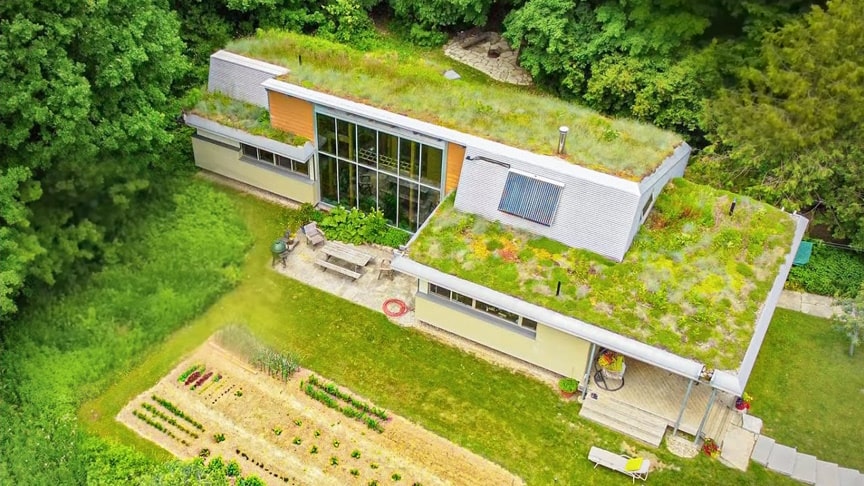This family’s ecological home is packed with sustainable features, including straw bale walls, natural materials and finishes, composting toilets, greywater plant beds, a green roof, a solar hot water heater, earthen floors, and a lot more!
source/image(PrtSc): Exploring Alternatives
They manage their forest and use the crowded, dead, or dying trees they remove as firewood to heat their home and they mill any quality wood to be used for projects around the house and property. They also grow and raise a lot of food, including fruit and nut trees, a vegetable garden, a greenhouse, and laying hens for eggs.
The home was designed by Martin Lieffhebber and includes sleeping pods at one end, an atrium in the middle to capture passive solar energy, and a living and kitchen area at the other end.
Advertisement
After 18 years of living in this natural home and working on multiple green building projects, Chris thinks that Passive House (Passivhaus) is where the industry is heading because it drastically reduces the amount of energy needed to heat and cool a home (often by more than 70%) and it can be done anywhere (urban and rural).











